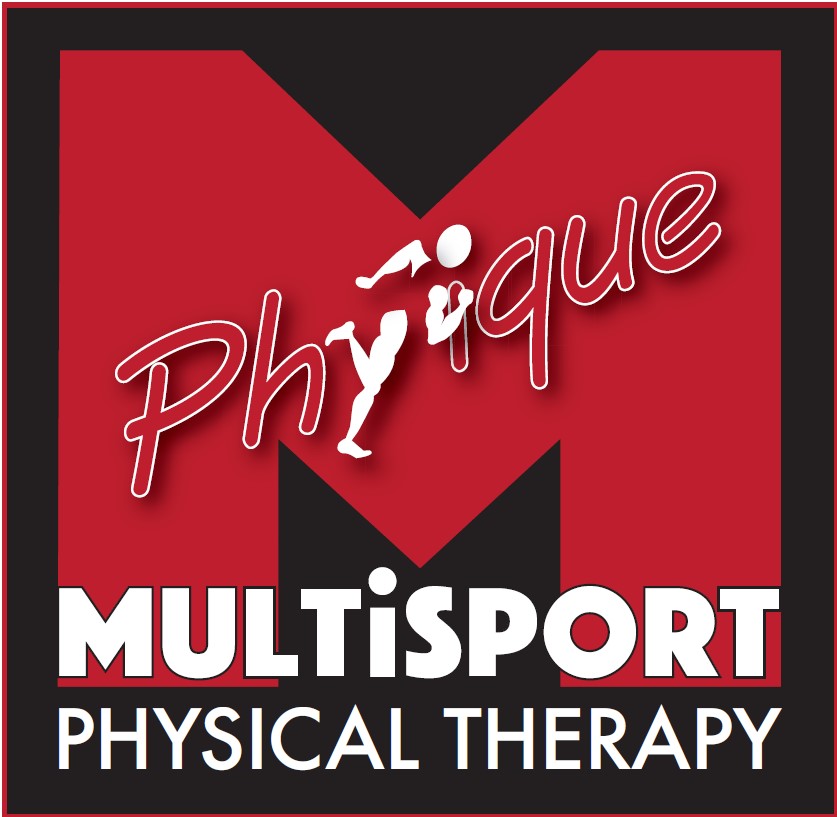Steve Sutherland
I recently talked triathlon with long time TCSD member and USA Triathlon Age Group Committee Chairman Steve Sutherland. Steve gives a ton of his time to our sport and he is absolutely someone you should know, despite occasionally wearing his bike helmet backwards. I know you will enjoy reading Steve’s story and getting to know this great guy.

2012 USA Triathlon Hall of Fame ceremony: left to right: Judge Jones, Dave Scott, Scott Molina, Mark Allen, Chuck Graziano, Kat Donatello, Steve Sutherland. Scott Tinley.
Craig: What sports did you do while growing up?
Steve: I was born near Ventura, and grew up as the oldest child in a large family. My Dad was an officer in the US Navy so we moved around every couple of years, mostly in California and Hawaii although we did spend a few years in Washington DC, Maryland and Rhode Island. When I was an infant we lived in Ocean Beach and Pacific Beach and Mom took me to the beach from the very start. My mother always encouraged us to go outside and play, I think in part because raising five active kids with Dad away constantly at sea or on assignment was a real challenge. Organized sports became an important part of our lives. My brothers, my sister and I all played baseball, basketball, track and field sports, and because we always lived by the ocean, swimming and surfing became a big part of my life. As a family we also hiked, camped, fished and were always encouraged to try out new things. We all grew up associating active outdoor sports as a very natural thing. And as we got a little older, our bicycles became a staple form of transportation. I was also fortunate that my parents strongly believed in teaching children to swim at an early age; my first swimming lessons happened around the same time that I learned to walk. I competed in surfing contests, got on the podium a couple of times and even toyed with the idea of trying to make the pro tour, but I knew deep down inside that I wasn’t nearly that good. My involvement in sports and sports competition has continued in one form or another continuously since then.
Craig: What was your first triathlon experience like?
Steve: For many years, my friends told me to try out triathlon. One of the first times I recall being encouraged to sign up for a race was around 1980. I rode my bike to The Plunge for a swim, and someone I knew suggested that since I biked and swam a lot, and competed in other sports, that I might want to sign up for triathlons. The idea sounded a little farfetched at the time, and it wasn’t until 2002 that I decided to put the time and energy into training and competing in a local race. My training was based on an eight-week plan on paper that I bought from Mrs. T’s. Even with good prep I was still quite naïve about racing but there I was at the Mission Bay Sprint in the fall, giving it my best shot. When I stood up at the end of the swim I felt dizzy and almost fell over. I took forever in transition getting out onto the bike course, and when I was about halfway around Fiesta Island I started laughing like crazy, with the sudden thought that “Holy cow, I’m really doing this!” For the transition to the run, I was again slow, carefully pulling on calf length basketball socks and Nike basketball shoes before doing a slow shuffle out to the run course. When I finally crossed the finish line I knew I was hooked.
Craig: When did you join the TCSD and what has your membership meant to you?
Steve: At that first race I met Jim McCann, and he strongly encouraged me to come to the next TCSD meeting. I met a lot of very enthusiastic and supportive people at that meeting, and I knew that this was a resource that I absolutely needed if I was going to get better at triathlons. I think the club only had about 300 active members then but they were all very involved and their enthusiasm was contagious. It was an easy choice to decide to join the club. I have been a regular attendee since 2003, and I credit our club and our terrific members with a big part of my evolution as a multi-sport athlete. The free workouts, the club races, and the overall supportive nature of our membership are priceless. And I’ve made many friends through the club, including Bill Dusting, Tony Berg, Gary Sowell, Charlie Szentisi, Mike Plumb and many more.
Craig: You have been very involved in USA Triathlon over the years. When did that relationship begin and what have been some of your highlights?
Steve: I joined USAT in 2003 after reading a short article about the Age Group Committee (AGC) in Transition Times, the precursor to the current USAT magazine. Chuck Graziano was seeking volunteers, I reached out to him and told him that I was still a newbie at the sport but I wanted to help if I could. My background in my professional life was a good fit for the type of committee work and support that Chuck needed. Almost immediately I was tapped to help create the USAT Hall of Fame. We are all very proud of that accomplishment. We selected our first class of inductees in 2008, and we now have over 40 individuals in the Hall of Fame including a number of TCSD members such as Bob Babbitt, Jim Curl, Paula Newby-Frazier, Scott Tinley and the late Jim McClaren. Chuck and I also helped create the Athlete of the Year Banquet (with a lot of help from Kat Donatello), and I spent a lot of energy streamlining and improving the selection process for our Athletes of the Year (AOY’s). Our next project was getting USAT lifestyle awards defined and awarded, which we called the Multisports Awards (Lifetime Achievement, Volunteer of the Year, Comeback of the Year, etc.) I took over leadership of the Age Group Committee three years ago, and we continue to work on issues that directly impact our membership. In addition to the projects I mentioned above, the AGC is responsible for coordinating and moderating the Annual Town Hall Meeting held at the National Age Group Championships, administering a grant program for education in rules and safety, assisting with the administration of the National Rankings process and assisting in the Hall of Fame selection and induction process. We’ve tackled Clydesdale/Athena issues, initiatives to increase the number of race officials, and concerns brought to us by age group members. I write the annual committee report that we submit to USAT. None of these successes would have happened without the full support we receive from Rob Urbach, Tim Yount, the USAT staff and the USAT Board of Directors.
Craig: I suspect a lot of thought went into creating the USA Triathlon Hall of Fame. What went into making sure our Hall of Fame fit our sport?
Steve: Chuck Graziano was very passionate about that project. There were three of us (Chuck, Michael “Judge” Jones and I) who were the primary drivers of the effort, but of course many other people also contributed. One of the first moves I made was to call 19 other halls of fame and find out how they operated including what rules governed selection of members, how did they honor those inductees, did they have a physical presence, and so on. And some of those halls of fame are ones you’ve heard of (the Baseball Hall of Fame, the Football Hall of Fame, the NASCAR Hall of Fame), some were a natural fit for our sport (the Swimming Hall of Fame, the US Bicycling Hall of Fame) while others were regional halls of fame covering many sports, such as our own Breitbard Hall of Fame in the San Diego Hall of Champions at Balboa Park. What I quickly learned was that a hall of fame for our sport would be managed a bit differently than other sports. For instance, the US Gymnastics Hall of Fame requires that inductees either be retired from the sport or be over 30 years old. If we waited for triathletes to retire before considering them for the Hall of Fame, we would have a lot of posthumous awards because endurance sport athletes just don’t quit. And a lot of our best athletes don’t even reach their peak until they are well over 30 years old, so that rule wouldn’t work. We decided to recognize candidates in three categories: elite athletes, age group men and women, and significant contributors to the sport. Our first class of inductees was named in 2008, and included Judy Flannery (age group athlete), Jon Gray Noll (President of Triathlon Federation, the predecessor to USAT), Verne Scott (Dave Scott’s dad, who helped write rules, sanctioning guidelines, and too many other things to list here), Karen Smyers (elite athlete) and Sheila Taormino (elite athlete and Olympian in swimming, triathlon and equestrian). That first ceremony was held in Colorado Springs at the Broadmoor Hotel, and was a stellar affair. The bar was set high for all the subsequent induction ceremonies that followed. We’ve since moved the annual ceremony around to other cities, including an amazing night in San Diego in 2012 at the Bahia Hotel when we inducted Mark Allen, Ethel Autorino, Bob Babbitt, Sally Edwards, Scott Molina and Scott Tinley. Dave Scott was on hand that night, allowing us to honor the “Big Four” who really helped popularize triathlon. By the way, I have to mention the incredible amphora that Judge Jones created for the awardees. They are unlike any award I’ve ever seen and the inductees really treasure them.
Craig: The Athlete of the Year Banquet is another one of your creations. What is that event like?
Steve: The Athlete of the Year and Multisport Awards Banquet is another one of our accomplishments that I’m very proud to have helped come to fruition. In 2011 Tim Yount came to us and discussed the possibility of a banquet to honor our athletes of the year as part of the national championship activities in Burlington, Vermont. Tim emphasized that we really had to hit it out of the park on our first go at this banquet or we would not have a second chance. We looked at possible venues for the banquet and settled on a dinner cruise on Lake Champlain. Tim and the USAT staff worked very hard to pull together the logistics with help from Chuck Graziano, Kat Donatello and I. The three of us took turns making the award presentations as the boat cruised on the lake right at sunset. We had about 125 attendees that year, and the feedback was terrific. During those first two years, we only had the Athletes of the Year as our awardees. Athletes were selected in triathlon and duathlon in overall, juniors, masters and grandmasters categories for men and women. When the national championships moved to Milwaukee in 2013, the decision was made to include our multisport winners as part of the banquet. This really put a different spin on the evening because the athlete of the year awards recognize purely athletic achievement whereas the multisport awards highlight the triathlon lifestyle. And it's important to remember that many people come to our sport not to get on the podium, but to have a healthy lifestyle, to help them get over addiction, a personal loss or other challenges in life, or because they just enjoy the sport. Our multisport awards include Volunteer of the Year Award, Jeff Jewell Spirit Award, Military Sport Award, Most Inspirational Comeback Award, Spirit of Multisport Award and Lifetime Achievement Award. We have had some terrific keynote speakers as well, including Mark Allen and Chrissie Wellington. The attendees at that banquet in Milwaukee were really impressed with the stories behind the winners of those multisport awards, and many people told me after (and at our subsequent banquets as well) that the emotional content of that part of the evening's presentation was what really left an impression.
Craig: What is USA Triathlon doing in the area of minority involvement?
Steve: USAT is interested in reaching out to underserved populations, including minority, youth, and women. We have been examining successful minority outreach programs that have been accomplished at the regional level, looking for those aspects that can be used at a national level. A great example is a program called “Strive To Tri” run by Tarus Nelson and his wife in Washington DC. His program involves after school and summer camps for disadvantaged youth. The program focuses on several key points: (1) how to introduce triathlon to youth; (2) how to deal with the economic pressures of the sport; and (3) how to have good participation so they keep coming back. Tarus’ program has been recognized at the county and national level. It involves 90 minute sessions, three days a week, and a six-week swim boot camp. The program is tied to USAT and helps to keep kids engaged throughout summer. If I look around the room at any of our Tri Club meetings, I see a lot of people who look like me. We don't have a lot of diversity in the sport. I find this especially unusual in San Diego where we have such a large Hispanic population and history. We helped create a survey to gauge the amount of outreach by regional and club organizations to underserved populations. The results of that survey are helping USAT shape our outreach programs.
Craig: What is USA Triathlon doing to educate it’s members to make smart and healthy choices in the area of anti-doping?
Steve: We are very concerned about doping and drug use in our sport, both from a race safety perspective and from a healthy lifestyle perspective. One challenge that we see is the legalization of marijuana. While certainly not a performance enhancing drug, marijuana is still a banned substance according to the World Anti-Doping Agency (WADA) and the US Anti-Doping Agency (USADA). Because triathlon is an Olympic sport and USAT is the national governing body of that sport, we fall under the WADA and USADA guidelines. Marijuana is legal in many states and probably will be legalized in more states soon, yet it is still a banned substance under the rules that we must follow. It's important to understand that when we talk about banned substances, they are banned “in competition”. That means the morning that you drive to the race, when you compete in a race, and when you drive home, you are "in competition". We are not interested in criticizing or regulating anyone's personal choices about lifestyle. There's also a concern about the use of performance-enhancing drugs such as testosterone supplements by age group athletes, again in part because it impacts fair competition and in part because of health risks. Drug testing of competitors is expensive and the administrative/chain of custody process is very challenging, thus we need to find more cost-effective ways of dealing with this issue. I'm part of a task force that is evaluating initiatives that USAT can take to educate the membership. Anyone interested in looking at materials that are available right now for anti-drug education can go to the USADA website and view the free training available there.
Craig: What are some of your favorite destination races?
Steve: Lavaman on the Big Island! I’ve competed in the Waikoloa Lavaman twice and highly recommend it as a destination race. And wow, what a party at the finish line! I would fly over there for Lavaman every year if I could afford it. I also have great memories from Strawberry Fields (Oxnard), Vineman 70.3 (Sonoma wine country) and Lake Stevens 70.3 (near Seattle); sadly those races have been retired. Our USAT National Championship races are also a must for anyone looking for a challenging and fun destination race. The locations get moved around every couple of years, which I think is great. Most of our national championship races do not require qualification; in other words, you can just register for the race and compete, but remember that the level of competition in these events is far above what we experience here at local races.
Craig: I have raced USA Triathlon National Championships 16x’s in my career. I love that event and wish more TCSD members would join in on the fun. Nationals is in Omaha August 12-13. Why would you recommend racing Nationals?
Steve: You can’t find a better venue for a high-quality race with outstanding competition than one of our national championships. The vibe of National Championship weekend is amazing, and you will really get pushed by top age group athletes at these races! The national championship you mention in Omaha is for Olympic and Sprint distance triathlon. We also have national championships for duathlon at Bend, Oregon; for Clydesdales and Athenas at Grand Rapids in June; for Youth and Juniors at West Chester, Ohio in August; for aquathlon at Austin, Texas in October; for aquabike and long course triathlon at Miami in November; and many other championship races. Just go to the USAT website and click on Events, then National Championships and you’ll see the full list with locations, dates, and links for registration. Our club has been very well represented at all the championship races every year, and we have a lot of members, like you Craig, who qualify for Team USA and represent the US at the world championship races.
Craig: You have done a lot of racing over the years. What have been some of the funnier things you have been a part of?
Steve: During one of the first years that I competed in the Spring Sprint, I managed to put my helmet on backwards before I got out on the bike course. I didn't realize I had done it and as I passed people and got funny looks I assumed it must've been because I was really doing well in the race. It was only after the race when I saw the photos that the proof of my mistake was revealed. I still laugh about it a lot. I also did a minor goof while doing a trail race that helped come up with this piece of advice: Don't wear your triathlon shoes with speed laces for an off-road race! During the Mission Trails Xterra race last year, I was wearing my triathlon shoes and when I stepped in a muddy spot the shoe stayed put, the speed laces gently let my foot slip out and I kept on running with just a sock on my foot. I had to turn around, fish my shoe out of the mud, hop around on one foot while putting the shoe back on, all while a sea of people were running around me. And of course, I was laughing the whole time. We can't take our sport too seriously, almost none of us are getting paid to do it.
Craig: Who have been the most influential people in your life? And what have been the most influential experiences you have had?
Steve: My Mom and Dad of course, for encouraging our participation in sports and outdoor activities when we were growing up. My siblings provided me with plenty of competition, and I’m laughing as I think of how competitive we made everything. In my business career I was lucky to have a couple of great mentors. In my late 20’s I worked for an aerospace company with Dan Curry, who showed through example and action how a person could be a great leader without being an overbearing bully. In my 40’s I had a fantastic mentor, Bob Schlesinger, who taught me a lot about building and growing a business, and whose advice I still hear sometimes in the back of my head. I’m lucky to have known my best friend Joe Bollinger for over 40 years, he’s always been there for me through thick and thin. And of course my wife Heather, my better and smarter half who has helped me have a rich, joyful life.
Craig: Who would you like to thank for your involvement in triathlon?
Steve: I’ve been blessed with a wealth of great friends who I’ve met through triathlon. At the top of that list has to be Chuck Graziano and Tim Yount, two of the best people you could ever meet. Many of the people I want to recognize are TCSD members, including Bill Dusting, Tony Berg, Charlie Szentisi, Bob Babbitt, Gary Sowell, and of course no list like this would be compete without mentioning Gerry Forman. I have to thank my coach for over a decade, Sergio Borges. And none of this would be possible without the love and support from my wife Heather, who has been there all the way, encouraging me, acting as my support crew, and giving me a big smile every time I finish a race.
Craig: If you could waive a magic wand over the sport of triathlon, what would you change?
Steve: I would like to see some way to reduce the barriers that many people face when looking at triathlons, including the financial hurdle (equipment costs, travel expenses, high race entry fees). Another barrier that many people face is access to training facilities especially swimming pools, and with that swimming lessons. Many children face a lack of after school programs and cuts in funding for athletic programs. Some of these things that we take for granted are out of reach for a large number of people who could potentially join our sport.
Craig: What are your future triathlon goals?
Steve: I would like to keep racing for as long as I'm physically able and as long as it’s fun. I'm very fortunate to have good health and good supportive friends and family. And if by some chance I ever qualify for Kona or another world championship, that would be the icing on top of the cake.
Craig: Steve, thank you so much for sharing your story. You have done so much for our sport. The USAT and TCSD are both lucky to have you. Keep up the great work! Good luck keeping your shoes on during your trail runs and with all your other lofty goals.
Craig Zelent is a USA Triathlon Level 1 Certified Coach. Craig can be reached at 760-214-0055 or tricraigz@yahoo.com.








